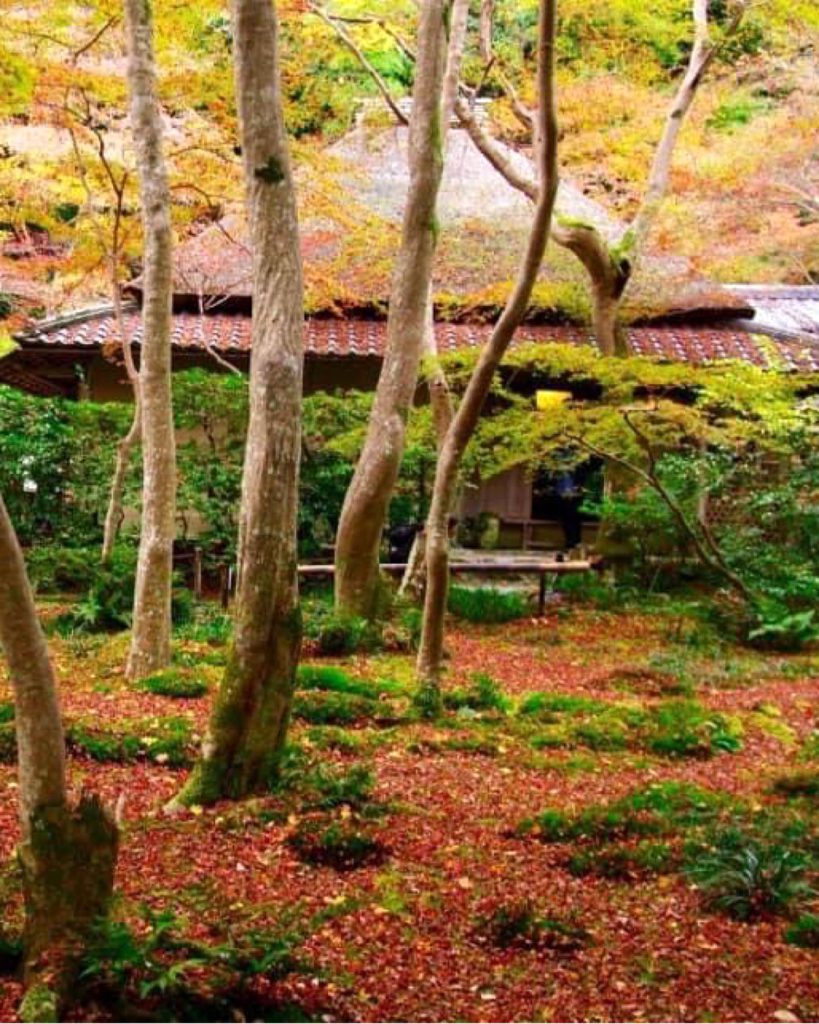
No matter how many times I read “About the Gioh” in “The Tale of the Heike,” there is something that touches my heart. Giou (the geisha), who had been favored by Taira no Kiyomori, knew that Kiyomori had changed his mind and moved to Sagano, at the western end of Kyoto, with his younger sister geisha and mother Toji, and set up a hermitage. Hotoke Gozen, who has been favored by Kiyomori on behalf of Giou, realizes that she will eventually suffer the same fate, and takes refuge with Giou family. The four women, who shaved their heads and became nuns, prayed wholeheartedly for future generations and lived by chanting nenbutsu. It’s a story that all four of them finally achieved paradise because it was worth it. Today, the site of that hermitage has become Gio-ji Temple, and is one of Kyoto’s leading autumn foliage spots.
『平家物語』の「妓王の事」はいくら読んでも胸打つものがあります。平清盛から一身の寵愛を受けていた妓王は、清盛の心変わりを儚んで、妹妓女と母刀自を伴って、京都の西の果て嵯峨野に移り住み、庵を結びます。妓王に代わって清盛の寵愛を受けることになった仏御前も、やがては自分も同じ運命を辿ると悟り、妓王の元に身を寄せます。剃髪して尼になった四人は、一心に後世を願って念仏を唱えて暮らします。その甲斐あって、最後には四人そろって極楽往生を遂げたと言うのが物語です。今はその庵の跡が祇王寺になり、京都でも指折りの紅葉の名所になっています。
